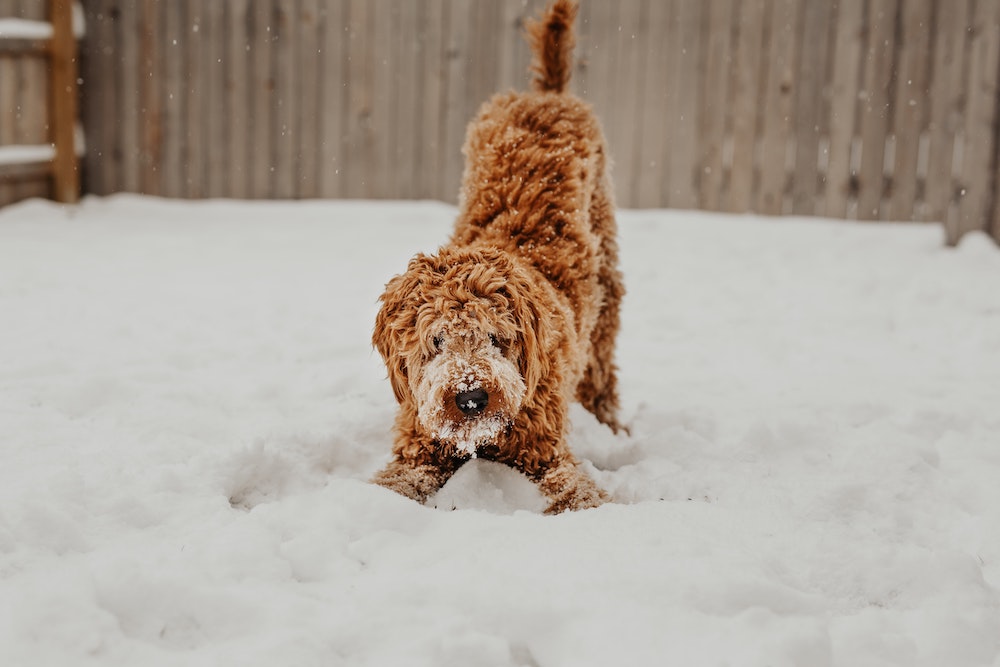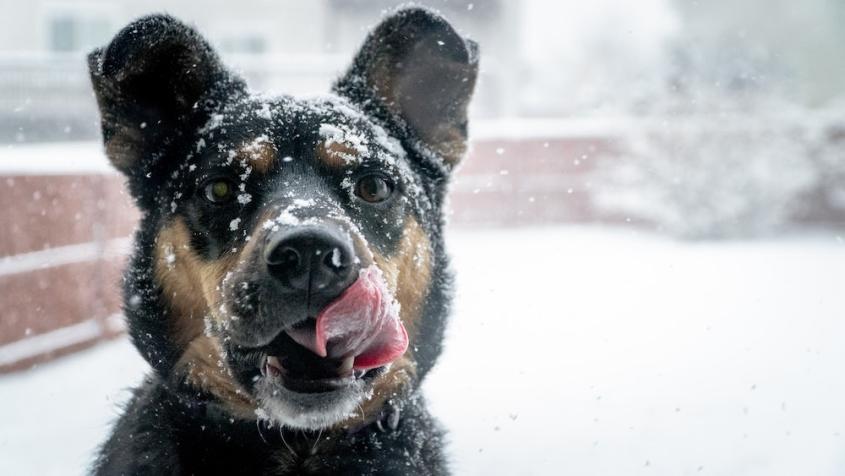Keeping your furry friends safe during winter weather
As temperatures continue to dip, experts from the Cornell College of Veterinary Medicine have advice on keeping our animal companions safe and comfortable during winter weather.
How to tell if your pet is feeling the freeze? “If a dog is picking up its feet or seems reluctant to walk this may be a sign that he/she is too cold. Small and short-haired dogs may need coats for short walks in cold, windy weather. They may need boots if they will be outside for longer periods of time,” says Brian Collins, D.V.M. ’94, section chief of the community practice service at the Cornell University Hospital for Animals (CUHA). “Dogs that live in areas where salt is used to control ice may need boots or to have their feet washed off when coming indoors. Longer-haired dogs may collect ice and snow on their feet, so check them regularly while outdoors. And consider trimming the fur on the feet to help prevent ice accumulation.”
As for feline friends, Collins says, “Cats are drawn to warmth. Close the door to the clothes dryer, and get in the habit of knocking on the hood of your car to scare away any cats warming themselves on the engine.”
While companion animals should not be left outside for long periods in the cold, Collins has advice for owners that might have to do so. “Dogs and cats who spend time outdoors should have shelter from the wind and cold as well as a source of fresh water. Straw works well as an insulator in dog houses.”
Dr. Lauri-Jo Gamble, former CUHA resident in the sports medicine and rehabilitation service, offers a few items and tips that can help keep your dog safe if you decide to practice an outdoor activity together:

- Pet coat or sweater
- Pet boots
- Shorten the hair between the paw pads to help prevent ice balls from forming between and around the paw pad
- Apply paw balm to the pads before each walk. After the walk, wipe your dog’s paw with a lukewarm washcloth. Then, apply another layer of the balm to soothe any irritation and to keep them from drying out, if you’re not using pet boots
- More frequent nail trim as less contact with concrete during walks
- Be aware that salt and most deicers can be toxic to our canine friends. Try to keep your dog away from roads and sidewalks that have been heavily treated with salt and chemical deicers
Says Gamble, “Dogs are susceptible to frostbite and hypothermia, just as people are, so use common sense as to how long your walks can be. Keep them short and watch for signs of hypothermia such as shivering, anxiety and moving slowly.”
Collins reinforces that owners should be mindful of the cold temperatures. “Animals that live in cold-weather climates are at risk for hypothermia, a potentially fatal drop in body temperature that can result from prolonged exposure to a freezing environment,” says Collins. “Very young animals, older animals and short-haired breeds are the most vulnerable.”
There are also winter byproducts that owners should be aware of, adds Collins. “Pet-proof the storage and disposal of wintertime hazards. The active ingredient in most brands of antifreeze is ethylene glycol, a sweet-tasting liquid that can be attractive to an animal, but is highly toxic. Store it where it is out of reach of pets, and clean up any spills right away.” Additionally, “The ashes from wood stoves and fireplaces can burn pets if they contain live embers. Make sure the ashes are cool before removing them.”
By following these key tips, you can help your furry friends stay cozy and safe all winter long.





